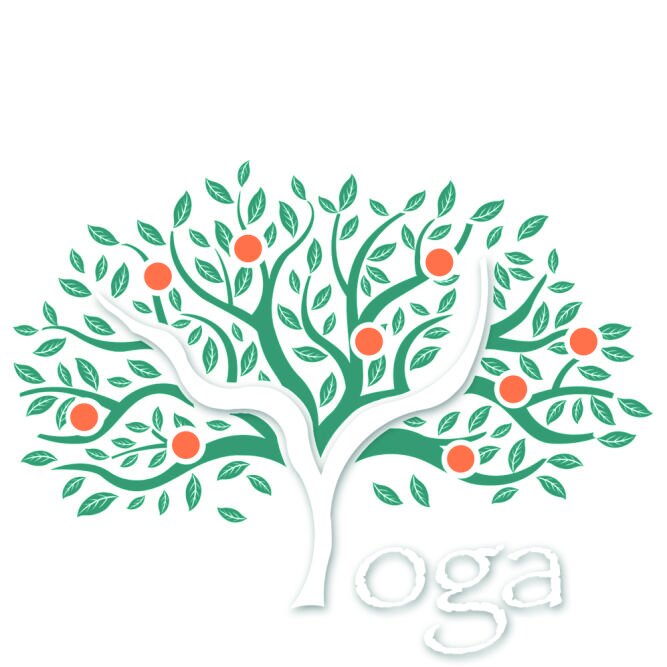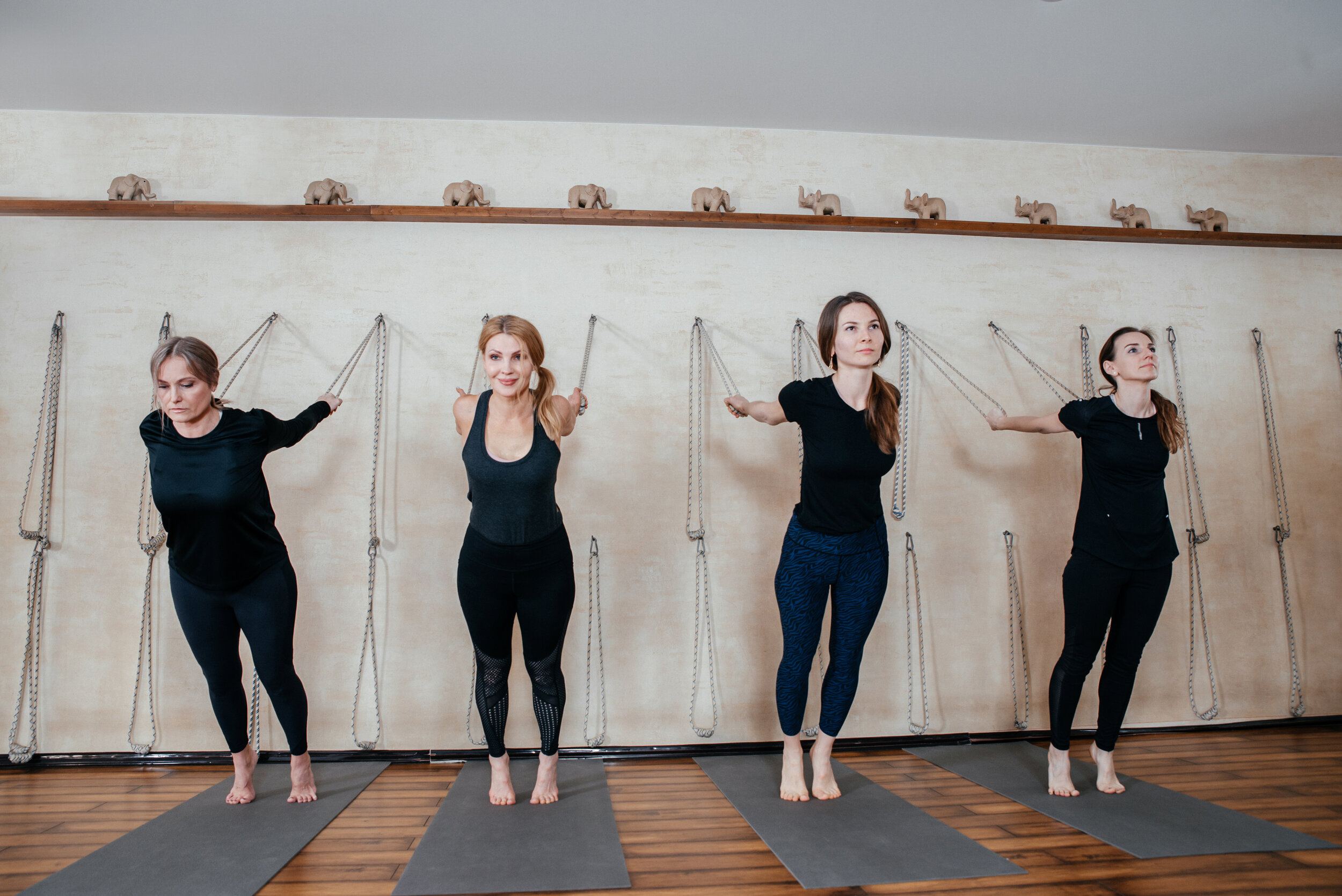What is Iyengar Yoga?
Iyengar Yoga is accessible and inclusive - students range in age from 7 to 97+. It descends from the most classical Hatha yoga tradition and has evolved into a precise and clear method that’s easily understood by the modern practitioner.
Lots of attention is paid to the technical alignment of the poses to keep the mind drawn inwards, but also focused and connected to reality.
Here’s some more information about the many benefits that it will bring by adopting this as a regular practice in your daily life.
Calms the mind
Iyengar yoga is a precise practice which demands attention to detail, mindful practice and working with the body’s own anatomical and energetic nature.
This focus is an essential part of this form of yoga. This allows you to innately sense every part of your body, and also helps calm your mind making it easier to focus, build stamina and harmonise the way you work with your body.
Helps alleviate symptoms of disease & promote healing
Iyengar yoga has been known (and scientific studies have shown) to help relieve the symptoms of a number of diseases through specific methods of asana applied to individuals with certain conditions. When you practice this form of yoga it improves the functioning of the circulatory, digestive, nervous and respiratory systems, activates internal organs and beats fatigues and stress.
Keeps stress at bay
Practicing Iyengar Yoga regularly under the guidance of a qualified teacher, helps you to build up a storehouse of resistance against stress and fatigue. You may still get stressed, or tired, or feel the effects of grief or other emotions, but the yoga will always be there as a tool which you can use to calm the mind and the nerves at those times that you need it the most.
What are Yoga Asanas?
They are often translated as "postures," but asanas, to many of those who practice yoga, are more than just body positions. A deep reading of yoga traditions shows that asanas are often physical manifestations of profound spiritual concepts. Some see the asanas as practical tools for attaining specific mind-body connections that are mentioned in traditional yoga references. The great sage of yoga philosophy, Patanjali, says that proficiency in Asana should be attained before the more subtle practices such as Pranayama (breath work), Dharana (concentration), Dhyana (Meditation) and Samadhi are approached so that there is a firm foundation for those more higher level practices.
Why “Iyengar” Yoga?
BKS Iyengar was born in Bellur, India in 1918. He died in Pune in 2014 and spent 80 years studying, practicing and teaching yoga. He was a pupil of the great yogi, Sri Krishnamacharya who also was the teacher of Pattabi Jois and Desikachar. BKS Iyengar was an incredible human being who dedicated his life to the service of mankind. He wrote many books including Light on Yoga, Light on Pranayama and Light on the Yoga Sutras of Patanjali. He would often say that his yoga was the yoga of Patanjali but his students penned it Iyengar Yoga. To train to become a certified Iyengar Yoga teacher takes a minimum of 6 years, and many more to attain senior status and to become a yoga therapist. You can find more information at www.bksiyengar.com or www.iyengaryoga.org.uk. See the extract from his book, Light on Life in which he explains what Yoga Asana is:
“The purpose or goal of asana is to align and harmonize the physical body and all the layers, or sheaths, of the subtle emotional, mental, and spiritual body. This is integration. But how does one align these layers and experience integration? How does one find such profound transformation in what from the outside may look simply like stretching or twisting the body into unusual positions? It begins with awareness.
We think of intelligence and perception as taking place exclusively in our brains, but yoga teaches us that awareness and intelligence must permeate the body. Each part of the body literally has to be engulfed by the intelligence. We must create a marriage between the awareness of the body and that of the mind.
When the two parties do not cooperate, it leads to a sense of fragmentation and “dis-ease.” For example, we should only eat when our mouth spontaneously salivates, as it is the body’s intelligence telling us that we are truly hungry. If not, we are force-feeding ourselves and “dis-ease” will surely follow.
Many moderns use their bodies so little that they lose the sensitivity of this bodily awareness. They move from bed to car to desk to car to couch to bed, but there is no awareness in their movement, no intelligence. There is no action. Action is movement with intelligence. The world is filled with movement. What the world needs is more conscious movement, more action.
Yoga teaches us how to infuse our movement with intelligence, transforming it into action. In fact, action that is introduced in an asana should excite the intelligence. When we initiate an action in asana and somewhere else in the body moves without our permission, the intelligence questions this and asks, “Is that right or wrong? If wrong, what can I do to change it?”
BKS Iyengar Light on Life






